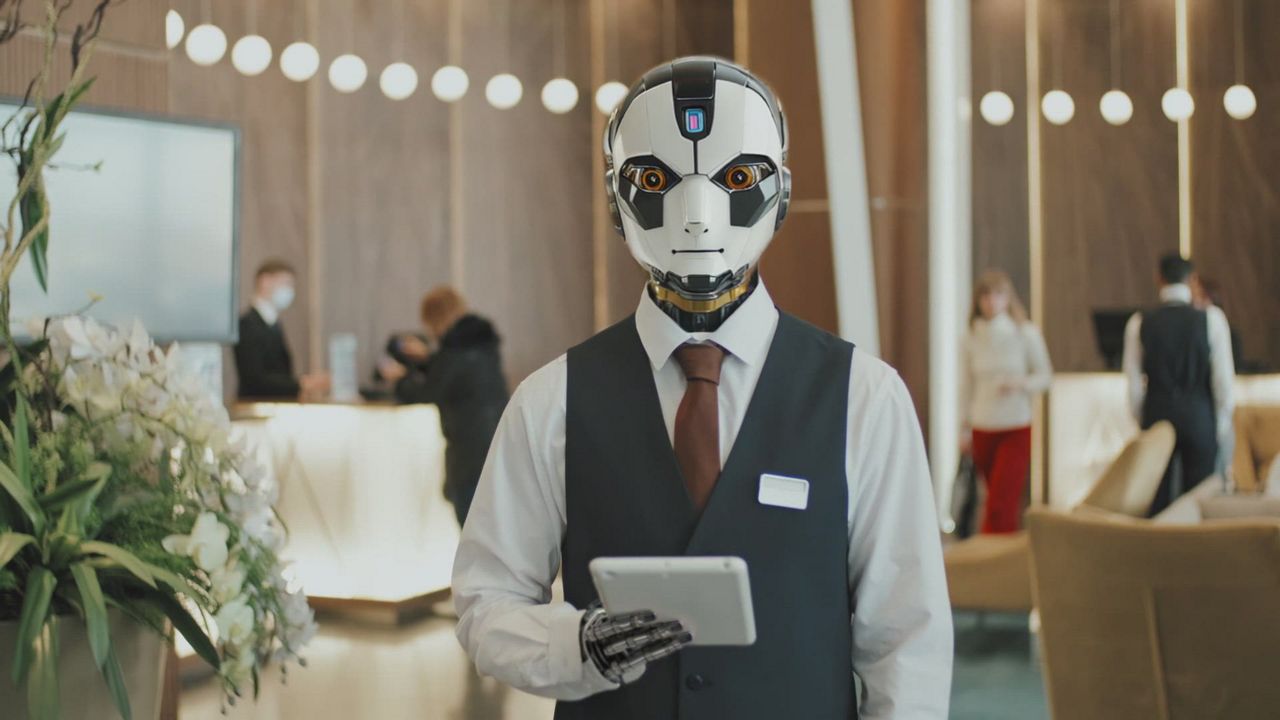
Striking Hospitality’s Ideal Balance Between Enhanced Automation and Human Interaction
Automated services such as mobile keys, self check-in, AI chatbots, and service robots are rapidly reshaping hospitality’s daily business operations. With benefits that include lower wait times, fewer repetitive staff tasks, and enhanced personalization, the technology is undoubtably becoming a common fixture for multiple service areas and departments.
Yet, if taken too far, automation risks diluting the human connection that often defines guest experiences. The challenge for hoteliers is therefore being able to determine where and how to apply automation so that each guest feels both in control and cared for throughout the duration of their stay.
How Automation Delivers Real Value
Automation most often excels when assigned to tasks that are high-volume, standardized, and time-sensitive.
Examples include:
- Mobile check-in and room access: Removes the most frequent friction point at arrival.
- Smart controls: Automatically adjust lights, thermostats, and TVs to ensure comfort and convenience while reducing energy waste.
- Daily operations: Automates guest requests, maintenance checks, inventory counts, and more.
These use cases work because they transform low-value and time-consuming interactions into near-invisible moments, letting guests focus their attention on what matters.
By streamlining repetitive work, automation also increases staff capacity without reducing service quality. This can include the automating of daily tasks such guest requests, maintenance checks, inventory counts and more. These types of clear advantages why several industry analysts believe that 25-30 of tasks will be automated by 2030. Yet automation should not be seen as a replacement for human-centric hospitality, but instead as a tool for providing the fastest and most effective route towards achieving it.
Where Humans Create Irreplaceable Value
There are moments when meaningful interaction, not mere efficiency, defines a guest’s experience and level of satisfaction. Examples include:
- Service recovery: A delayed room, a booking error, or a family traveling under stress demonstrates how direct staff involvement is often the best approach.
- Emotional intelligence: The ability to read a situation, de-escalate frustrated emotions, and make things right is a uniquely human strength.
- Memorable moments: Guests rarely remember the flawless kiosk interaction, but they never forget the person who turned a bad day into an enjoyable and rewarding experience.
Providing opportunities for human interaction also offers the ability to strengthen the meaning behind experiences, such as:
- A concierge’s local story.
- A staff member’s thoughtful recognition of a milestone such as a birthday or wedding anniversary.
With even helpful technologies like video-enabled calls often feeling clinical and detached if used as the default, a better approach is to let automation handle the basic mechanics, with human support available instantly for edge cases or emotional needs. This way, technology can clear the space for people to do what they do best.
Designing the Ultimate Sweet Spot
Industry businesses may find that deciding how much to automate can depend on the type of property and guest demographic being served.
- Luxury properties and those in higher age groups: Tend to favor high-touch face-to-face interactions.
- Budget or business travel hotels and Gen Z travelers: Often prioritize the faster and more reliable benefits of automated service offerings.
To plot the best path forward, hoteliers should ultimately analyze every guest touchpoint with a focus on always providing choice. Each guest has their own preferences on when they wish to opt for either human interaction or automation, and value the ability to switch back and forth between the two options as they see fit during their stay.
One real traveler experience demonstrates this point during a one-night stay at a hotel on a European road trip that only offered digital check-in.. Before being able to receive a room key, the process required the guest to enter-in personal details, passport numbers, and upload photos for each individual traveling with them. After spending hours on the road, what should have been seen as a convenient self-service option instead transformed into a time-consuming burden for this guest.
Hoteliers should therefore avoid creating forced funnels where guests feel pressured to interact with a hotel’s offerings and services in a specific way. At each touchpoint, there should be clearly displayed and easily accessible ‘escape hatches’ for those seeking human assistance or desiring a faster service alternative. For example, during a hotel stay in Italy, an over-reliance on kiosks without staff backup caused delays and frustration—illustrating the risks of poor balance.
Maintaining a Stable Balance
When designing guest-facing service architecture, properties should always plan for the unexpected. If a service is suddenly disrupted and goes offline, guests should still be able to move forward using an alternative option. Examples include offering physical room keys, manual payment options and a clear escalation path to a human representative who is able to assist.
Hotel staff should also not just be trained to understand how an automated solution works, but to further recognize the signs of a guest who might be frustrated or drifting. Being able to step in at the right moment can make all the difference between creating an unintended disruption and ensuring that a guest is able to overcome any obstacles standing in the way of their satisfaction.
Measuring Success
Knowing whether the right balance has been achieved should show up in a hotel’s numbers. When the data consistently shows smooth arrivals, swift service recoveries, high voluntary self-service adoptions, and staff focused on tasks that only humans can do, a hotel business is undoubtably on the right path towards ensuring an ideal level of automation and meeting the expectations of each guest.
How does your hospitality-based business determine the right level of service automation? Be sure to share your own positive or negative experiences by posting a comment to the blog post on Vingcard’s social media channels.
Subscribe to our Newsletter
Fill out the form below to subscribe to our newsletter. By doing so, you'll not only be the first to discover what's next on our blog but also join a community passionate about the innovation and tradition driving the hospitality realm forward.



